I’ve made some fine road trips in my day, in several countries. But I believe the road trip that I just returned from was one of the best ever. The trip was mostly on back roads from Stokes County, North Carolina, through the Blue Ridge Mountains into the New River Valley, thence into West Virginia to Green Bank.
My primary mission was to see the Green Bank radio telescope, the largest fully steerable radio telescope in the world. To go see the telescope seemed like a no-brainer, since it’s not that far away and since I’m a space nerd and a radio nerd. Getting there was half the fun.
I am not well traveled in West Virginia. We all know that parts of West Virginia are environmental sacrifice zones, chiefly for coal but also for natural gas. This road trip took me through a very different part of West Virginia — a still-natural and well-preserved countryside, much of it in national forests.
The wildflowers! The trip would have been worthwhile for the wildflowers alone. The roadsides and pastures were dense with wildflowers at the peak of summer. I was green with envy at the rainfall the area has had and how green everything was. In between the mountains, the ridges of which tend to run north to south, are wide valleys, extremely fertile. It’s perfect pasture land. And, judging from the size of the farmhouses, that pastureland made lots of farmers rich. These are not the small subsistence farms that were much more common in the American southeast.
Morning temperatures ranged from 68 to 75 degrees F. Afternoons might have been warmer except that clouds and showers seem to descend on the area pretty much every summer day. There was hardly any traffic on the roads. I drove with the windows down, enjoying that sense of freedom (in my Smart car) that car commercials always try to give — the idea that there’s no one on the road but you. The road trip was almost freeway-free. GPS did the navigating, but when presented with alternate routes I always chose the routes that followed rivers or that avoided populated areas.
The telescope is fascinating. I have been plotting the third book of the Ursa Major series, and in book 3 Jake and Phaedrus actually will find themselves at Green Bank, having gotten there by mule, for some action scenes that require the use of the telescope, though the telescope had been idle since the calamity struck (in the first novel) that wiped out 6 billion of the earth’s population and returned the survivors to the Iron Age.
The telescope is extremely sensitive to radio interference. It’s located inside the National Radio Quiet Zone, and the surrounding mountains also keep out radio interference. I lost my cellular signal 50 miles south of Green Bank. Upon arriving in Green Bank, hoping to find accommodations to spend the night there (there are no such accommodations), I stopped at the public library, hoping to use WIFI. They library staff told me that they’re not permitted to have WIFI because it would interfere with the telescope. If you visit Green Bank, try to arrive early in the day, do the tour, and then leave yourself time to head east toward Charlottesville or south toward Blacksburg, if you want something to eat or a place to sleep — or Internet access.
The tour takes an hour. You’ll start in the auditorium with an undemanding scientific briefing from your tour guide, and then a video. Then you’ll board a bus and be driven to a point near the base of the telescope. The tour guide will explain that the bus uses a diesel engine, because the spark plugs in a gas engine would create radio interference.
It’s hard from photographs to grasp the scale of the telescope. It’s 485 feet tall, 60 percent higher than the Statue of Liberty. The size of the dish is almost three acres. It weighs 8,500 tons, but it can be rotated and tilted (azimuth and elevation) with extreme precision.
There were nine people in the tour group I was in. Six of them were Dutch, two were British, and I was the only American. Why are Americans so incurious? Once again I was reminded why I have so often said that I have much more in common with the average European than with the average American. I returned to Trump country — Wytheville, Virginia, to spend the night.
Driving south toward Wytheville, about an hour from Green Bank, I got cellular service again. A text message arrived from Ken, who was holding down the fort at the abbey: “Four foot long snake has been relocated. Raccoons ate all orchard apples. Lily is well. .15 Inches rain. Hope you’re having fun.”
Wytheville was not much fun, to tell you the truth. Wytheville was once a sleepy place, but major new roads have turned it into a travel hub. Watching an ill-mannered, incredibly unhealthy bunch of Americans descend on a free Ramada Inn breakfast made me want to emigrate to Scotland as quick as I could pack my bags. I was conflicted about where to have dinner in Wytheville. The many restaurants were mostly about “family” food, or they were chain restaurants. I finally settled on the Sagebrush Steakhouse & Saloon. It appeared to be locally owned, and I liked the “saloon” part of the name. I confess that I had a filet mignon with garlic mashed potatoes and broccoli. It was superb. I felt as though I was having supper in a well-run Irish pub. If you ever find yourself in Wytheville, I recommend it.
Places like Fries, Virginia, are depressing. Fries is a classic example of a textile town that is now poor, culturally and otherwise. In other words, Trump country. In 1940, its population was 1,555. It’s now 469. Years ago, most of the people worked in the cotton mill, which was powered by a hydroelectric dam on the New River. The dam is still there; the old mill has been demolished. The mill closed in 1989 and put 1,700 people out of work. The roads around Fries are a classic, and depressing, example of Trump-supporter impoverishment. The housing is dilapidated, with junk in the yards and dogs on chains. The nasty little churches seem to be the few remaining businesses. One of the churches even seemed aware of the fact that it’s just a business selling heavenly comfort into the squalor. “Under same management for over 2,000 years,” said the church’s sign out front. Harrumph.
But how different the economy of West Virginia used to be! Not only were there prosperous farmers living on fertile land, there were many resorts, most having to do with springs. The grandest resort I saw was Sweet Springs, designed by Thomas Jefferson and once a hangout of the rich and famous.
Upon arriving home, I said to Ken that the road trip put me in mind of thoughts he describes in Trespassing Across America. Ken uses much more refined and nuanced language, but this road trip made me both love and hate America. Wonders such as the Green Bank Telescope are a reminder of what Americans have accomplished. Sweet Springs — not to mention those beautiful farms and the national forest — is a reminder of what America once was and promised to be. But now there are Trump signs amid the ruins of our old economy. As for the new economy in places this remote, it appears mostly to have to do with big highways and the sublimely ugly service and retail development that springs up along those highways. A brush with Europeans is a reminder of just how ignorant and culturally impoverished most Americans are.
You know what I think would make this country great again? An educated and informed population, the opposite of what Donald Trump and his political party stand for. I got the heck out of Fries and Wytheville and hurried back to the abbey, a tiny Fox-free bubble of books and imagination in the foothills.
So why will Jake and Phaedrus find themselves at Green Bank in book 3 of the Ursa Major series? A calamity threatens — an act of sabotage that would destroy an incoming ship loaded with E.T. VIP’s from the galactic federation. Unless Jake and Phaedrus can succeed in transmitting a radio signal out to the vicinity of Neptune to prevent the detonation, earth will get itself into yet another deep pickle, as earth is wont to do.

The tour guide uses a Faraday cage and a spectrum analyzer to show how even a digital camera can create radio interference.
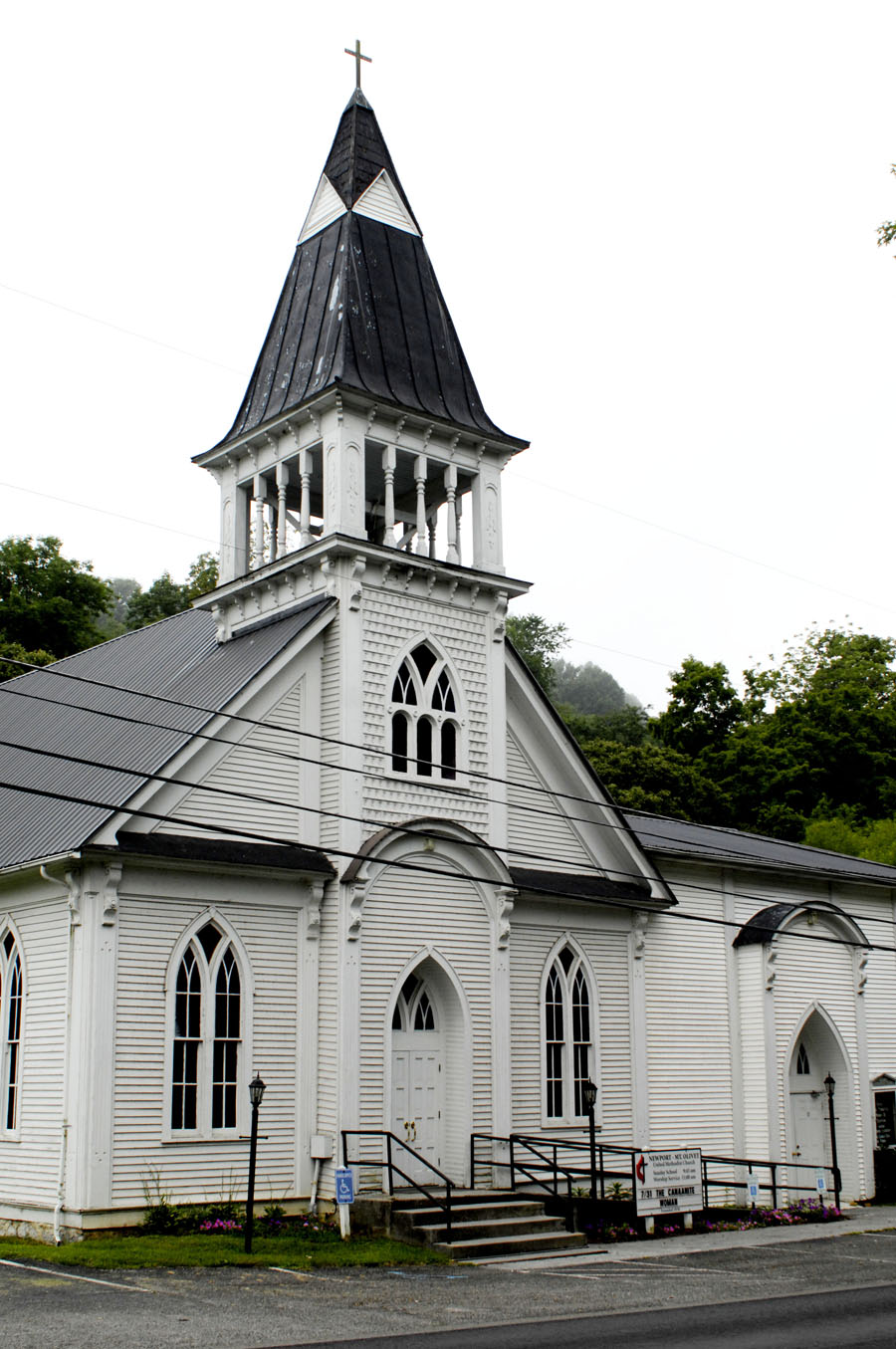
The nicest of the many churches I passed
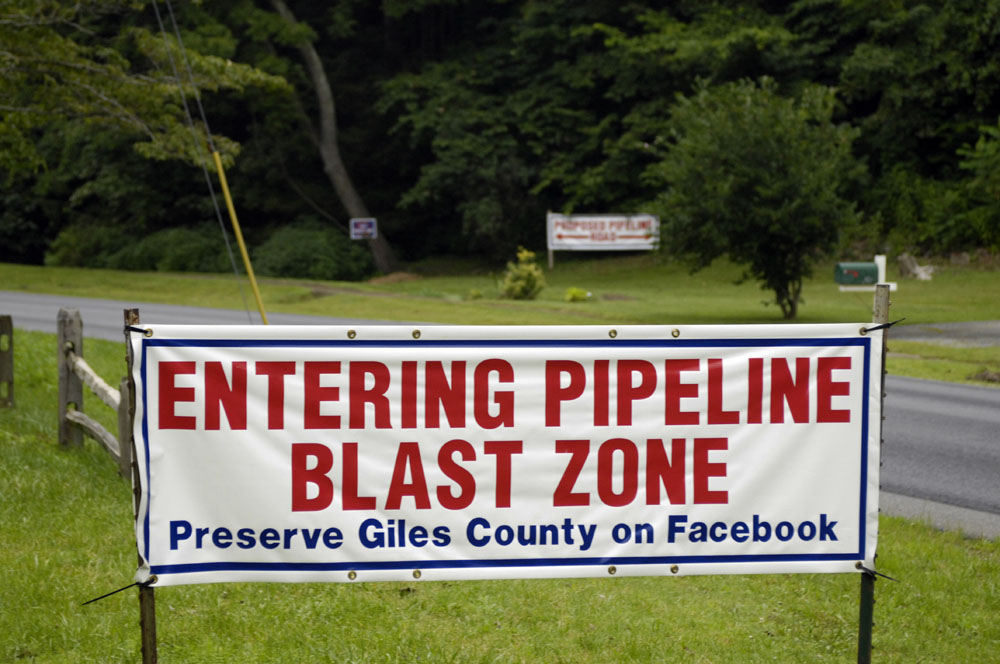
What else is new? Outside money is always seeking to turn what’s left of natural America into a sacrifice zone.

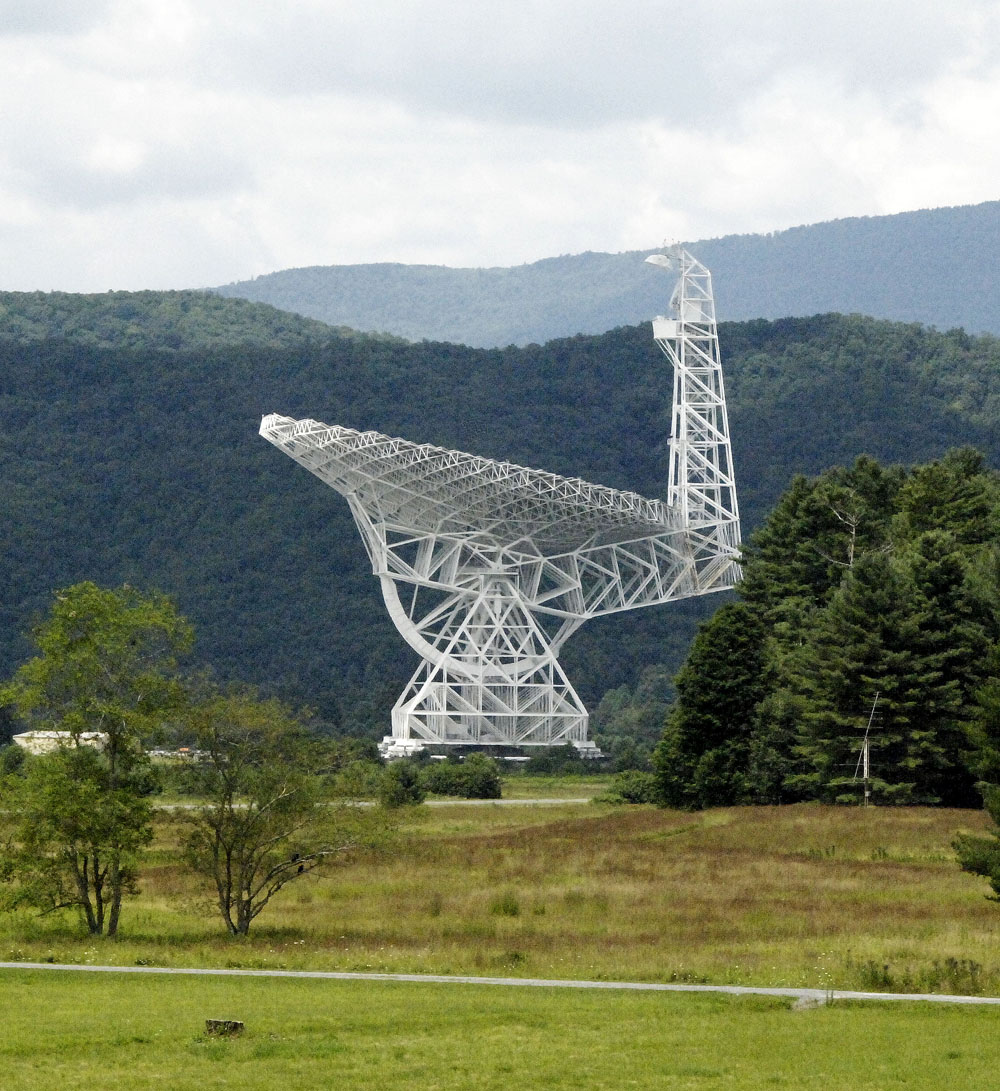



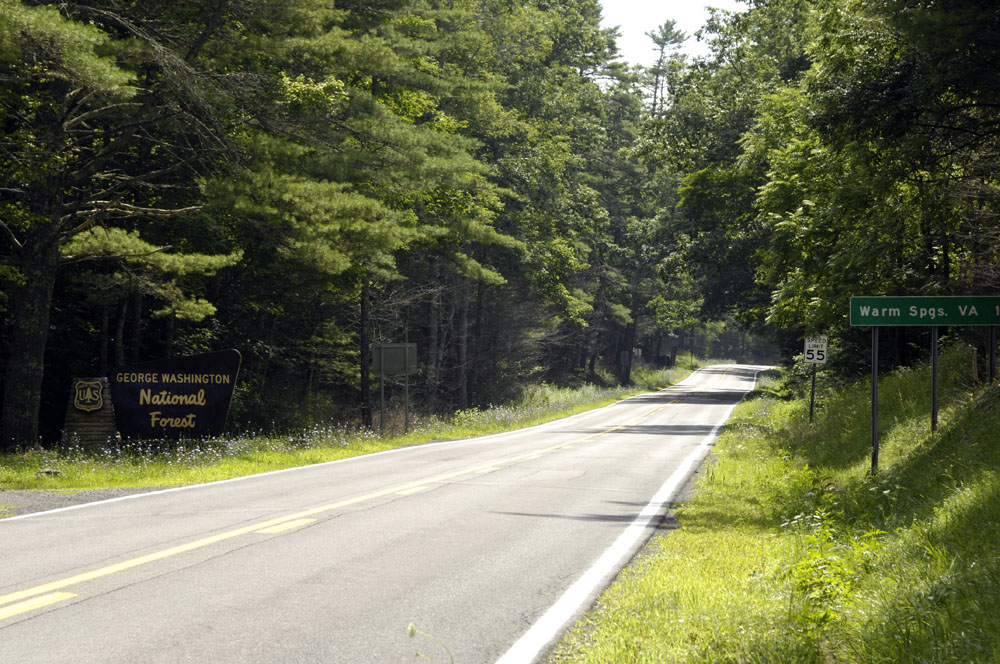
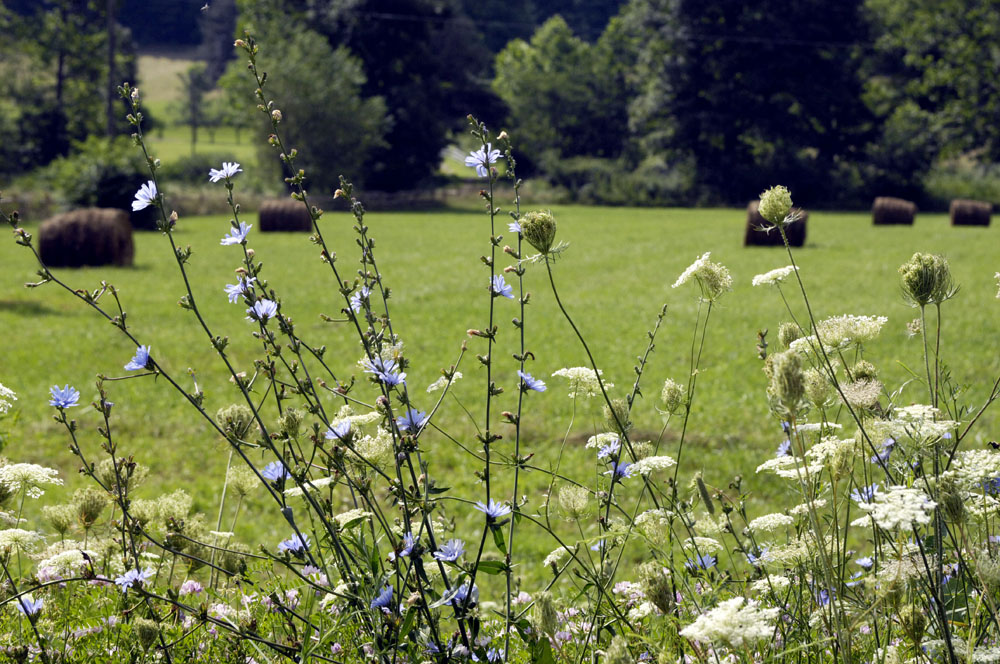


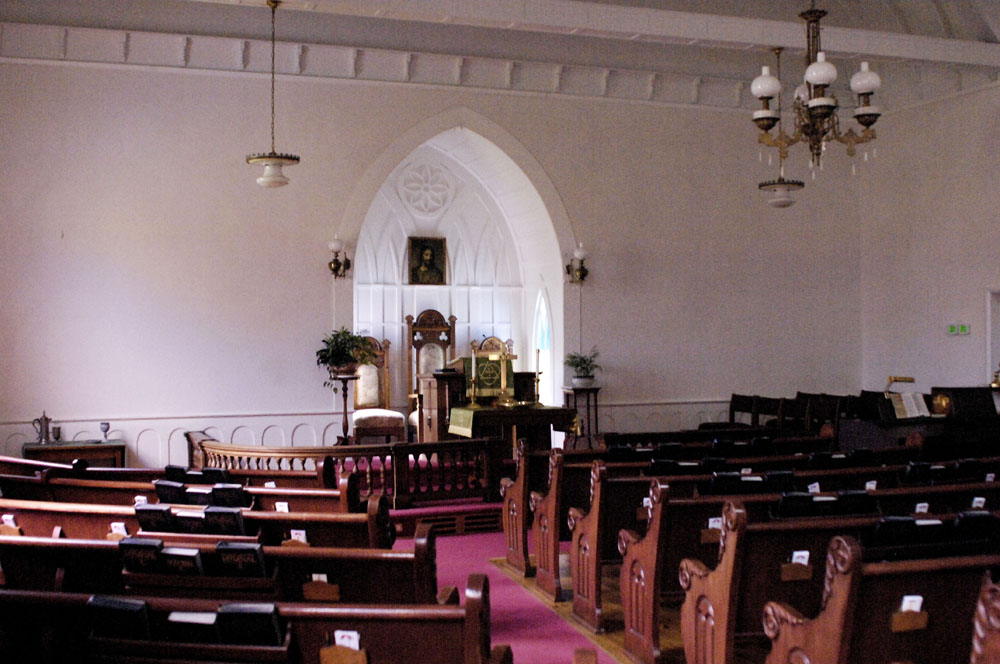

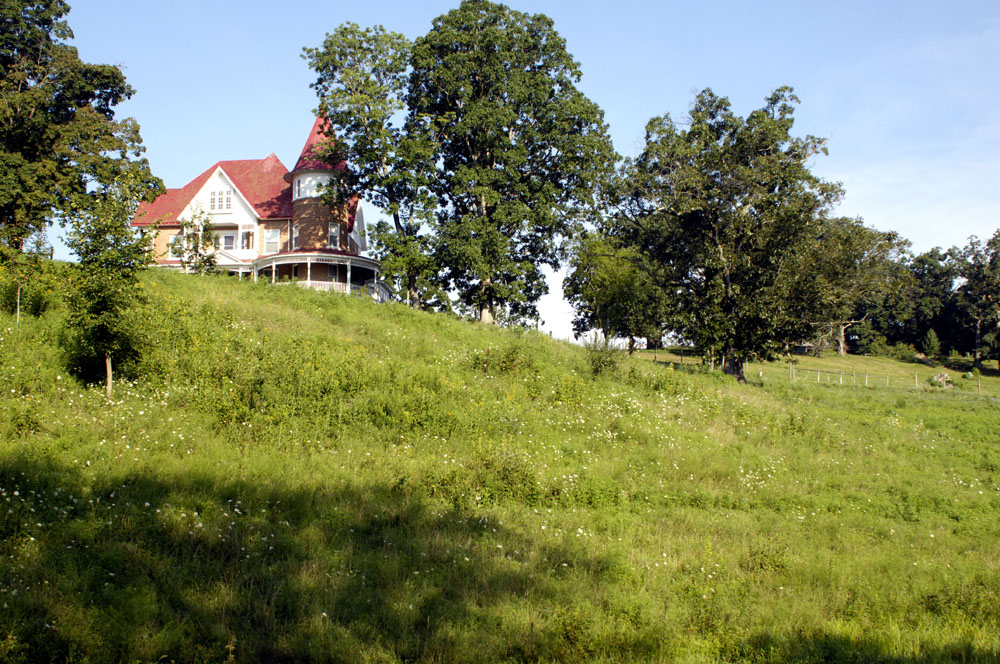

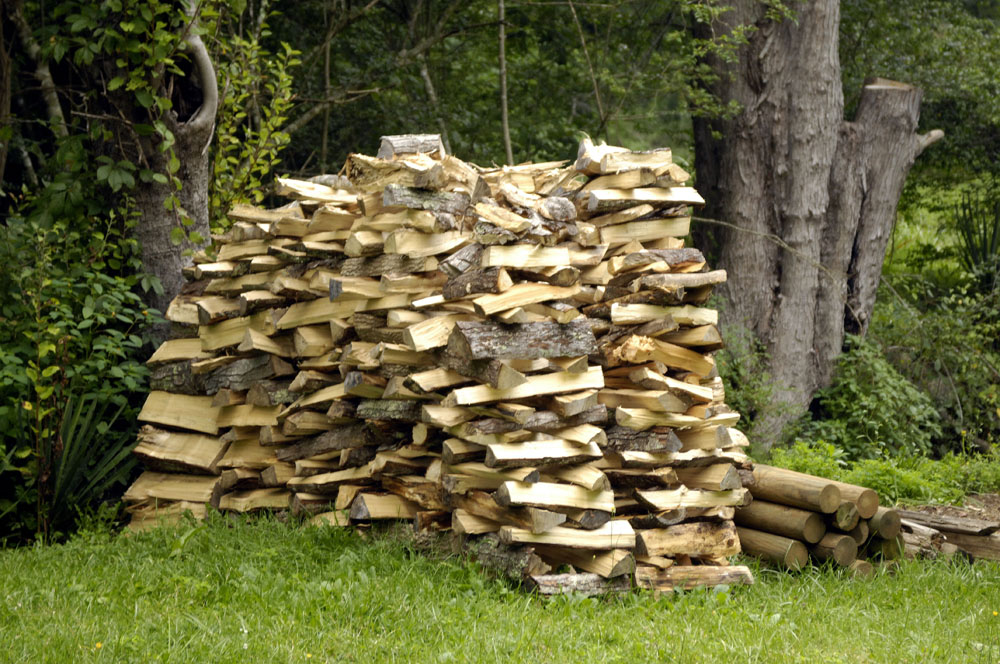
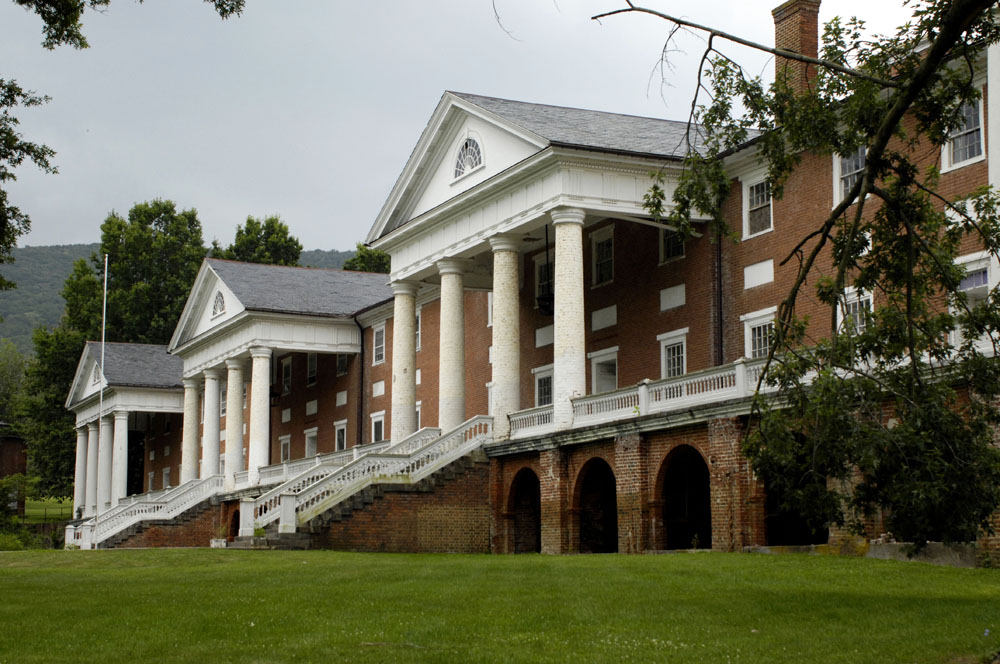


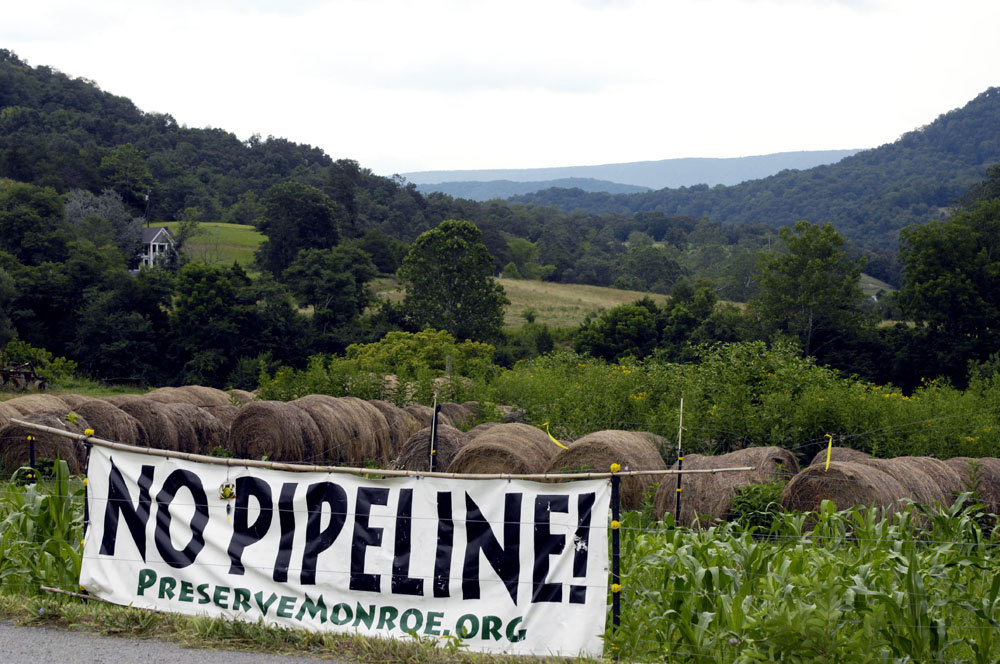
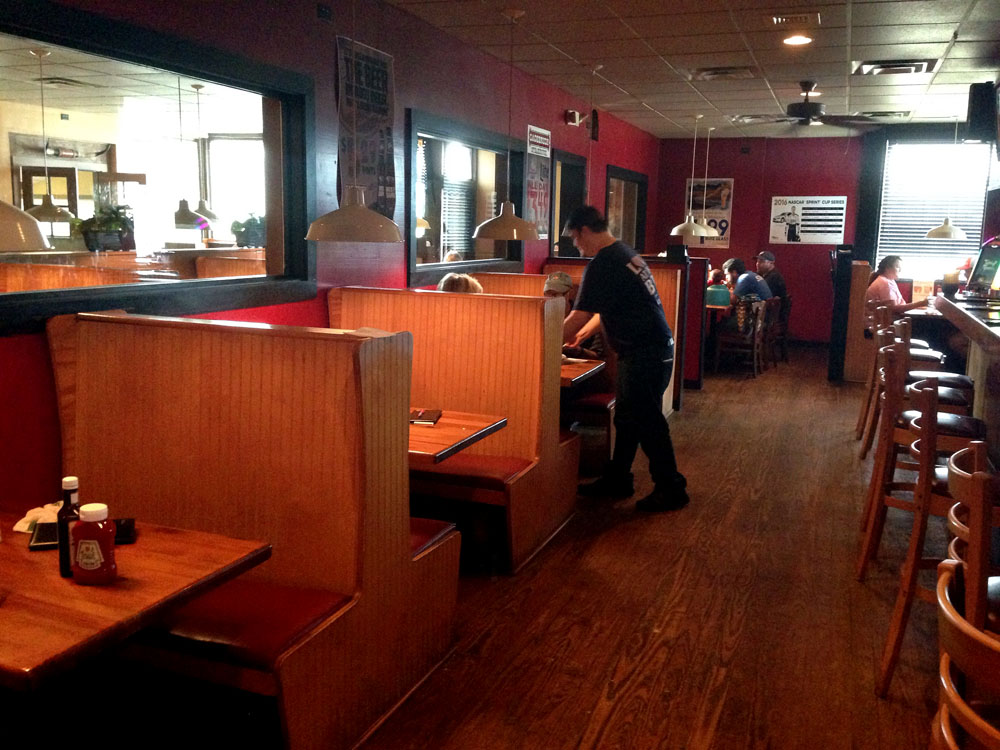
Good morning
Just returned from a fishing trip to Montana. I am going to copy some of your words and pass them on to my friends.
I loved this post…
Henry
Thanks for the wonderful post and photos. Love the NO FRACKING signs! Although I’ve never been to West Virginia, I was aware of its natural beauty, so thanks for the glimpses.
The telescope in the lead photo is so oddly elegant, only word I can think of, perched in that natural setting. It’s a site-specific sculpture. Lucky you to get to travel there to see it. I’m in Minneapolis. Sigh.
DCS